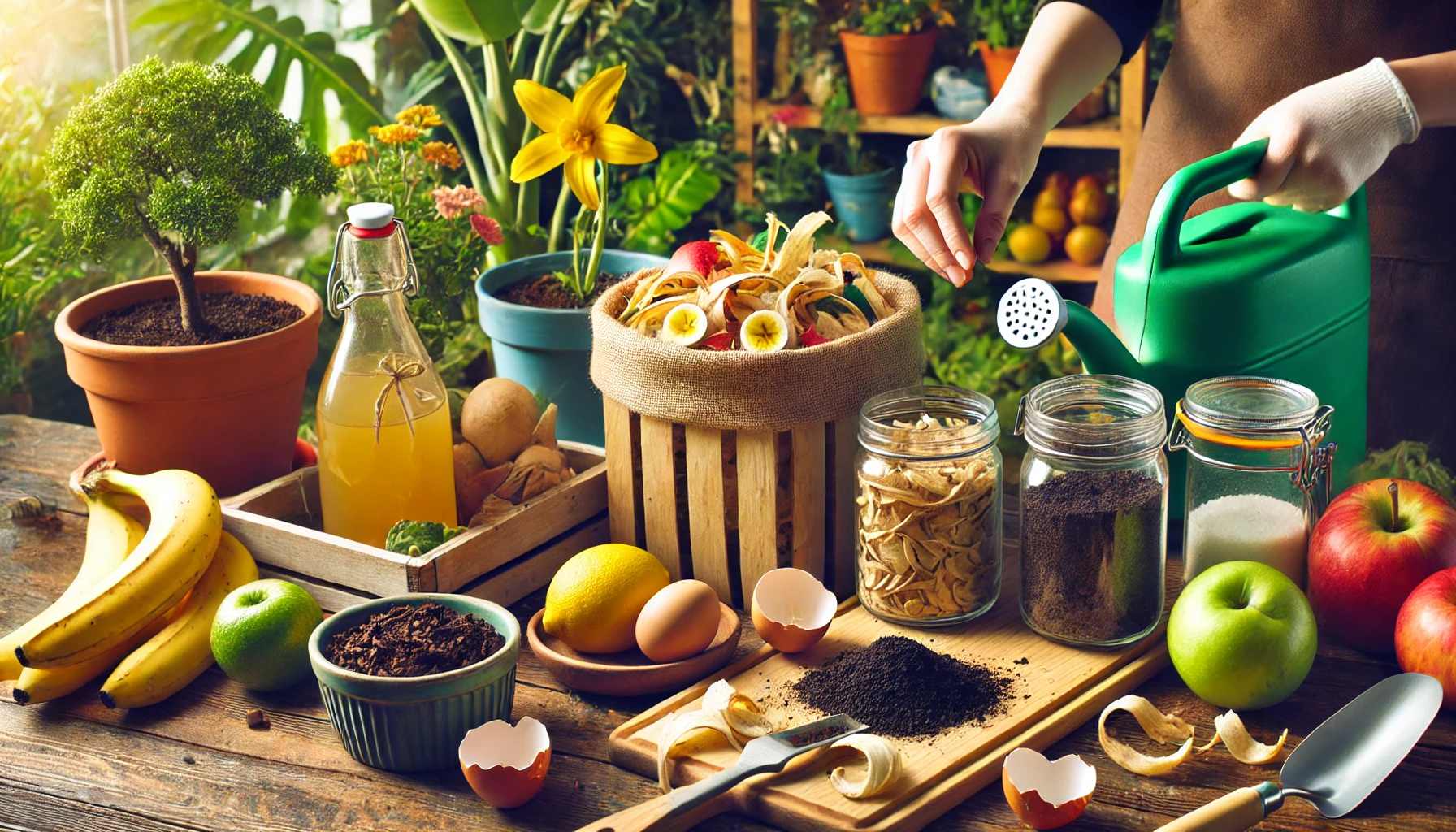Healthy plants thrive when given the nutrients they need, and natural fertilizers are an excellent way to enrich your soil without relying on synthetic chemicals. Homemade fertilizers are not only eco-friendly but also budget-friendly. This guide will show you how to create natural fertilizers at home to keep your plants lush and thriving.
Why Use Natural Fertilizers?
Natural fertilizers improve soil fertility by adding organic matter and essential nutrients like nitrogen, phosphorus, and potassium. Here are some key benefits:
- Improves Soil Structure: Organic matter enhances the soil’s ability to retain water and nutrients.
- Environmentally Friendly: Reduces chemical runoff that can harm ecosystems.
- Cost-Effective: Utilizes kitchen waste and garden scraps that would otherwise be discarded.
Key Nutrients Your Plants Need
Plants require three primary macronutrients for optimal growth:
- Nitrogen (N): Promotes leafy growth and is essential for green foliage.
- Phosphorus (P): Supports strong roots and aids in flowering and fruiting.
- Potassium (K): Enhances overall plant health and resistance to stress.
Micronutrients like calcium, magnesium, and iron are also vital in smaller amounts.
Simple Homemade Fertilizers
1. Compost
Compost is one of the best natural fertilizers. It’s made by decomposing organic waste like fruit peels, vegetable scraps, and yard trimmings.
How to Make It:
- Collect kitchen scraps (avoid meat, dairy, and oily foods) and yard waste.
- Place the materials in a compost bin or pile.
- Turn the pile occasionally to aerate it and speed up decomposition.
How to Use It:
Mix compost into the top layer of soil or use it as mulch around your plants.
2. Banana Peel Fertilizer
Banana peels are rich in potassium and phosphorus, making them an excellent nutrient boost for flowering and fruiting plants.
How to Make It:
- Chop banana peels into small pieces.
- Bury them near the roots of your plants or blend them with water to create a liquid fertilizer.
How to Use It:
Add the mixture to the soil around the base of your plants.
3. Eggshell Fertilizer
Eggshells are a great source of calcium, which strengthens cell walls and promotes healthy growth.
How to Make It:
- Rinse and crush eggshells into small pieces.
- Sprinkle them directly onto the soil or add them to your compost pile.
How to Use It:
Mix the crushed shells into the soil around calcium-loving plants like tomatoes and peppers.
4. Coffee Grounds
Used coffee grounds are a rich source of nitrogen and can improve soil structure.
How to Make It:
- Collect used coffee grounds and let them dry.
How to Use It:
Sprinkle them lightly over the soil or add them to your compost. Avoid overusing, as they can make the soil too acidic.
5. Fish Emulsion
Fish scraps can be turned into a nutrient-rich liquid fertilizer.
How to Make It:
- Blend fish scraps with water in a 1:2 ratio.
- Let the mixture sit for a few weeks to ferment.
How to Use It:
Dilute the fish emulsion with water (1:5 ratio) before applying it to your plants.
6. Weed Tea
Weeds can be transformed into a nutritious tea for plants.
How to Make It:
- Collect weeds like dandelions and nettles.
- Submerge them in a bucket of water and let them steep for a week.
How to Use It:
Strain the mixture and dilute it with water before using it as a foliar spray or soil drench.
Tips for Using Natural Fertilizers
- Don’t Overdo It: Excess nutrients can harm your plants. Apply fertilizers sparingly and observe how your plants respond.
- Balance Nutrients: Use a variety of fertilizers to provide a balanced range of nutrients.
- Time It Right: Fertilize during the growing season (spring and summer) when plants are actively growing.
Plants That Benefit Most from Natural Fertilizers
- Leafy Greens: Nitrogen-rich fertilizers like coffee grounds boost leafy growth.
- Flowering Plants: Phosphorus-rich fertilizers like banana peels encourage blooms.
- Fruit-Bearing Plants: Potassium from banana peels and compost enhances fruit production.
Conclusion
Homemade natural fertilizers are an excellent way to nourish your plants while reducing waste and supporting the environment. By incorporating these DIY solutions into your plant care routine, you’ll enjoy healthier, more vibrant plants while saving money. With consistent use and care, your garden will thrive like never before.
